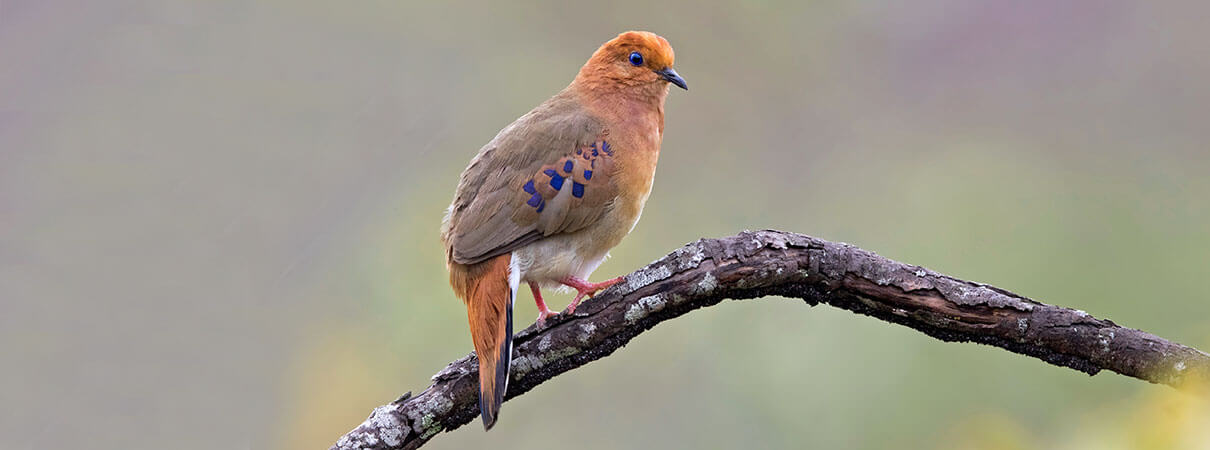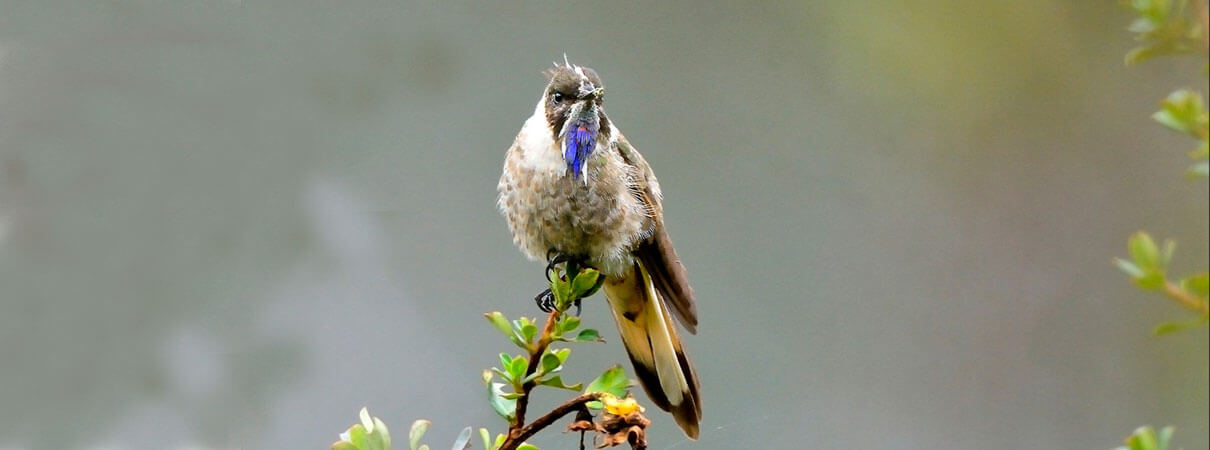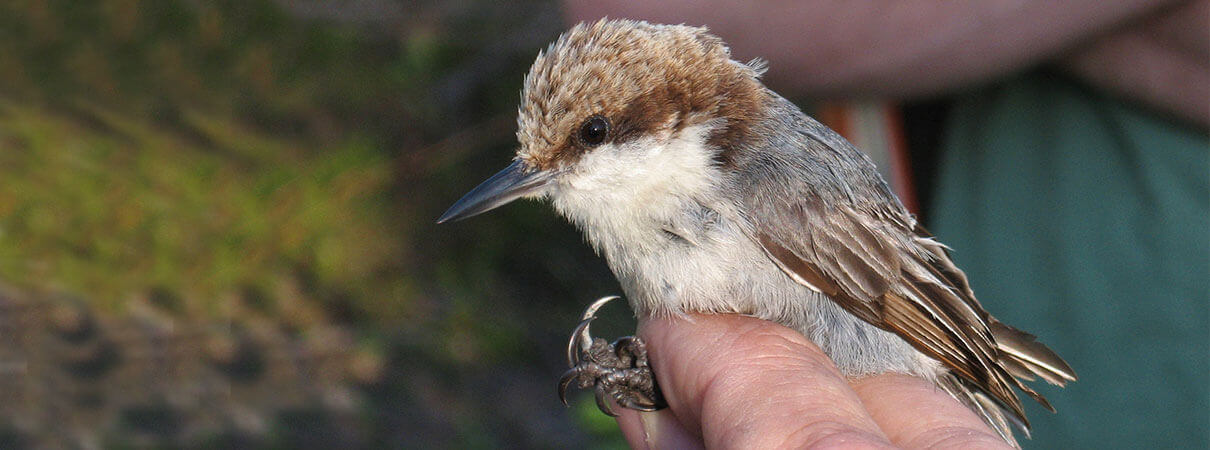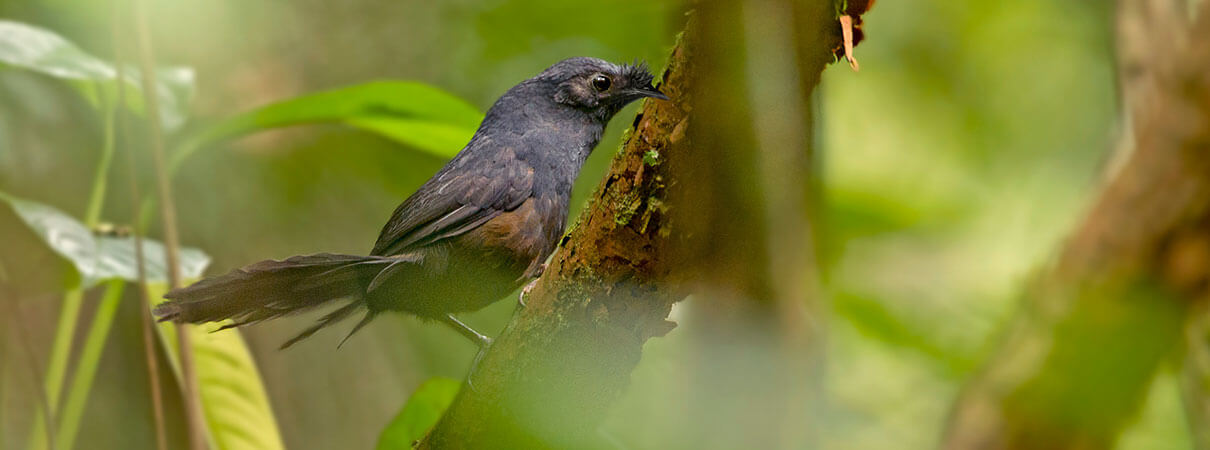Nearly Extinct but Still Hanging On: Five Rediscovered Birds
Perched on the brink of extinction, lost birds are among the most intriguing enigmas in the bird world. Unseen for decades or more, the existence of these birds — known only from outdated photos, drawings, or a museum specimen or two — remains a source of lingering question and doubt.
Sometimes they remain hidden in unsafe or remote areas. In other cases, the birds are overlooked, considered part of a closely related and more widespread species until scientists, in a taxonomic twist, declare them separate species. Whatever the circumstances, these birds are among the rarest of the rare. In the Western Hemisphere, at least two dozen bird species have been classified as "lost."
Despite needle-in-a-haystack odds, researchers have rediscovered birds five times in the Americas in the last five years. These finds offer deeper insights into the lives of these mysterious birds — and a fresh opportunity to protect them from the brink of extinction.

Blue-eyed Ground-Dove. Photo by Ciro Albano
Number One: Blue-eyed Beauty
In Brazil, a combination of skill and luck led to the July 2015 rediscovery of the spectacular Blue-eyed Ground-Dove, which had been lost for 75 years.
This lost bird was known only from a few scattered records in the Brazilian savanna, referred to locally as the cerrado. Over the 75 years, much of the area's value as bird habitat was lost due to burning and agricultural encroachment, raising further doubts about the ground-dove's existence.
That changed when a researcher, Rafael Bessa, heard a bird call he did not recognize while conducting a bird survey far to the east of the dove's suspected range. By recording the call and playing it back, Bessa was able to photograph the bird and confirm its survival.
The rediscovery launched a race to save the remaining population. ABC partner SAVE Brasil successfully led efforts to create a protected area for the Blue-eyed Ground-Dove in February 2018, and birders can now see the dove in person.
More recently, ABC supported a conservation planning workshop orchestrated by SAVE Brasil to determine the next steps for the ground-dove. Proposed actions include additional searches and studying nesting success with camera traps. SAVE Brasil is also considering starting a captive breeding population.
With fewer than 20 birds in separate areas known, the Blue-eyed Ground-Dove's future is not yet secure, and sustained conservation efforts are still needed to increase its population.

Táchira Antpitta. Photo by Jhonathan Miranda
Number Two: Song from the Shadows
Roughly 60 years ago, the stubby, short-tailed Táchira Antpitta was last observed within the forests of South America. Then, in 2016, a search team supported by ABC and the Smithsonian Institution and led by Jhonathan Miranda of the Red Siskin Initiative and Provita, located the lost antpitta in Venezuela.
To find this bird, searchers consulted the notes of the collector who discovered the first one. Those descriptions led the party to the original area of discovery.
They knew the easiest way to find the Táchira, or any antpitta, was to listen for its far-carrying song. But no one knew what the Táchira Antpitta sounded like. It was only known from the collector's notes and a few museum specimens — making the quest to find this elusive bird even more difficult.
In the field, the team heard what sounded like an antpitta, so they got to work, returning to the area again and again until, elated, they took good photographs and made sound recordings – enough evidence to confirm that this bird remains among the living.
ABC first reported the Táchira Antpitta finding in 2017, and a scientific paper containing full details of the rediscovery is in the process of being published.
Now, with the knowledge of the bird's vocalizations, researcher Jhonathan Miranda and others hope to find more birds elsewhere in Venezuela and across the border in Colombia.

Blue-bearded Helmetcrest. Photo by Sebastian Ballesteros Caro
Number Three: Mountaintop Marvel
The flashy Blue-bearded Helmetcrest long languished in taxonomic obscurity, lumped with other helmetcrest species. It was last observed in 1946. During much of the time this bird remained lost, it was considered part of another, more widespread species, which meant less attention from conservationists.
Searches conducted in the 1990s and early 2000s failed to encounter the species in what's now known to be its small range. In 2013, a scientific paper advocated splitting helmetcrest species. Shortly after, in March 2015, ABC partner Fundación ProAves launched a search and rediscovered this bird.
The Blue-bearded Helmetcrest inhabits high-altitude shrublands known as páramo, where it is closely associated with frailejón plants growing on the high peaks of Colombia's Santa Marta Mountains.
While this area is remote, it is not untouched. Fires set to manage pastures for cattle frequently degrade the habitat. However, since the bird's rediscovery, a nonprofit organization called the Amazon Conservation Team, has begun working with local indigenous groups, and has initiated an app-based monitoring system to better understand the distribution of this hummingbird.
Despite its rarity, the Blue-bearded Helmetcrest continues to be seen in the Santa Marta Mountains, including, most recently in January 2018, when it was spotted by a visiting birder.
Number Four: The Biggest Lost Bird Re-found
The turkey-sized, curly-crested Belem Curassow inhabits one of the most deforested regions in Brazil's Amazon region, and had last been spotted in the wild in 1978.
Thirty-eight years later, the curassow suddenly re-appeared, when three were found in a small Brazilian zoo. The following year, in 2017, something even more exciting happened: Scientists working with local indigenous people found a pair of Belem Curassows — known as the Mytunxi in the local Tupi language — in the wild.
Although curassows are highly vulnerable to deforestation and hunting pressure, their populations can recover — even in degraded forests — if provided relief from hunting. And, fortunately, the rediscovered birds are protected within the Gurupi Biological Reserve in northeastern Brazil.
Researchers used sound recordings and photos to document the rediscovery, as reported online in the Brazilian environmental journal ((o))eco. Check out the curassow's alarm call, which sounds like a high-pitched, space-movie laser.

Bahama Nuthatch. Photo by Tom Benson
Number Five: Bahama's One-Island Wonder
Grand Bahama island was but one island hit by Hurricane Matthew in October 2016, but it was the only remaining home for a brown-capped passerine, the Bahama Nuthatch, which was last spotted before the hurricane's arrival. Subsequent searches of its pineland habitat were unsuccessful, and it looked as though the hurricane might have claimed the species.
That changed in May 2018, when a field crew led by Zeko McKenzie, a researcher at the University of The Bahamas-North, found, photographed, and videotaped the lost nuthatch, documenting the species' continued survival. McKenzie was part of a search team that was supported by American Bird Conservancy (ABC), the Bahamas National Trust, and others. Another team, led by ornithologists from the University of East Anglia, was looking as well. After a short while, both teams confirmed the presence of the nuthatch.
So far, at least five individuals have been counted, and ABC is considering actions to protect the rediscovered Bahama Nuthatch and, hopefully, find more of these rare birds.

Stresemann's Bristlefront. Photo by Ciro Albano
UPDATE: “World's Rarest Bird” Sighted in Brazil
An individual Stresemann's Bristlefront, one of the world's most endangered birds, was observed in Brazil in December 2018, after months of searches had come up empty. Sightings of the bristlefront on December 12th and 14th in fragments of habitat in Bahia, Brazil, have renewed hope that there is still time to save this remarkable, ground-nesting songbird from extinction. With only one currently known individual, this may well be the world's rarest bird — although researchers do hope to find more individuals in the near future.
Coming Soon: Rediscovered Hummingbirds
If you want to read about other rediscovered birds, check back in the coming weeks: I plan to post another blog focused on hummingbird rediscoveries from prior decades.
 | Daniel Lebbin is the Vice President of Threatened Species at American Bird Conservancy. He completed his Ph.D. dissertation at Cornell University in 2007 on habitat specialization of Amazonian birds. f you have an interest in searching for any of the species mentioned in this blog, or supporting expeditions to look for them, contact Dan at dlebbin@abcbirds.org. |


















































